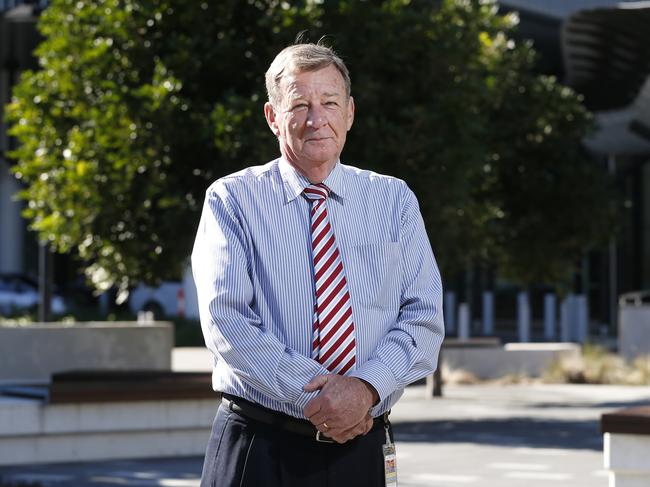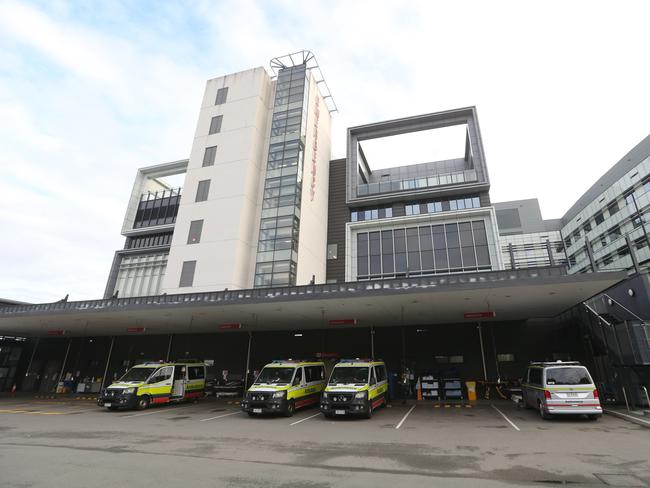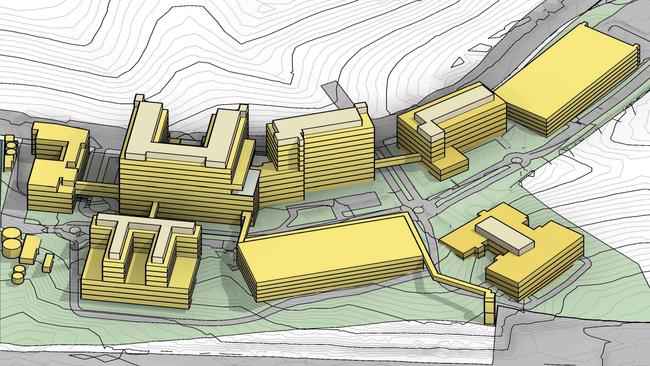Gold Coast Hospital and Health Service Board Chairman Ian Langdon on reality of health system
We’ve heard a lot recently about the challenges facing the health system. But the reality on the Gold Coast paints a different picture, writes Ian Langdon.
Gold Coast
Don't miss out on the headlines from Gold Coast. Followed categories will be added to My News.
We’ve heard so much recently about the challenges facing the health system. Ramping and emergency department (ED) wait times continue to be hot topics of discussion. While the challenges in healthcare are real, politically motivated stories do not always paint an accurate picture of the world-class care offered by Queensland Health.
I am concerned that the negativity on public health not only, unfairly, erodes the confidence of the public in public health services it can also be demoralising for staff who are absolutely giving of their best. As Chair of Gold Coast Hospital and Health Service, I am incredibly proud of our staff, their skills, compassion and dedication and I’m appreciative of the government support we have received.

I believe it is important to put the negative commentary into context.
The increase in investment into the Gold Coast public health service since my appointment as Chair of the Board in 2012 has been extraordinary. The following are the facts. Between 2012-13 to the current 2022-23 year:
* Total annual revenue has increased from $863 million to about $2 billion.
* The total number of inpatient beds has increased from 861 to 1,169
* Staff numbers have increased from 5,100 to 8,900 (full-time equivalent).
The health service moved from its former Southport location to a $1.7 billion new hospital, opened a $200 million Allied Health facility at Robina, benefited from a $275 million Robina Hospital expansion, acquired a $45 million community health hub, and started a day surgery hospital at Varsity Lakes.
Over the next five years, more than 600 beds will be added, at an approximate cost to the taxpayer of $2 billion. This is made up of:
* 72 beds at GCUH
* 40 mental health beds at GCUH
* 114 beds at Robina
* 400 beds at Coomera by 2027 in a new $1.3 billion hospital.
Alongside this considerable investment and expansion, a range of clinical services have been added that previously required public patients to travel to Brisbane including Level 6 cardiac surgery, nuclear medicine and neonatal intensive care.

Stories often misinterpret what ramping looks like, and as a result, the public assumes it means that patients are forced to wait in the back of an ambulance for care. At Gold Coast Health hospitals, all patients are brought into the hospital, immediately triaged and kept under the watchful eye of the paramedic and nurse until a bed is available.
In the 15 days to the end of November 2,732 ambulances arrived at our two hospitals – an average of 182 a day – and for every patient arriving by ambulance, two patients come by other means. Over the 15 days, 8,299 patients arrived at the emergency departments, an average of 553 per day. Not many people appreciate that the Gold Coast University Hospital is the busiest emergency department in Australia.
Regardless of the method of transport by which a patient arrives, we treat the sickest first. All of the Category 1 (i.e. the sickest) patients were seen in the clinically recommended two-minute time.
Over the 10 weeks to December 18, the average ambulance handover time was 39 minutes. This is just nine minutes longer than the 30-minute target. Reports of patients waiting on stretchers for five or seven hours are simply not accurate.

Adding pressure to the hospital system is the diminishing availability of GPs and GPs who bulk bill. In previous decades, more than 40% of medical graduates became GPs. Today, only about 14% of medical graduates pursue this. Many patients who can’t get a timely GP appointment end up seeking treatment from a hospital ED.
Each year, a smaller percentage of people choose to pay for private health insurance, and often, even those who do pay prefer to attend our public hospitals to avoid the gap fee.
GCUH and Robina Hospital were recently named in Newsweek’s 2022 World’s Best Hospitals list. Recently, GCUH was named in Newsweek’s 2023 World’s Best Smart Hospitals – 218 in the world and the fourth best in Australia.
While the challenges ahead in health care are many, I hope this has reminded you of what a world-class health service we do have, and I hope you are as proud as I am of the excellent care Team Gold Coast Health provides to residents every day.
Ian Langdon is Gold Coast Hospital and Health Service Board Chair
More Coverage
Originally published as Gold Coast Hospital and Health Service Board Chairman Ian Langdon on reality of health system




